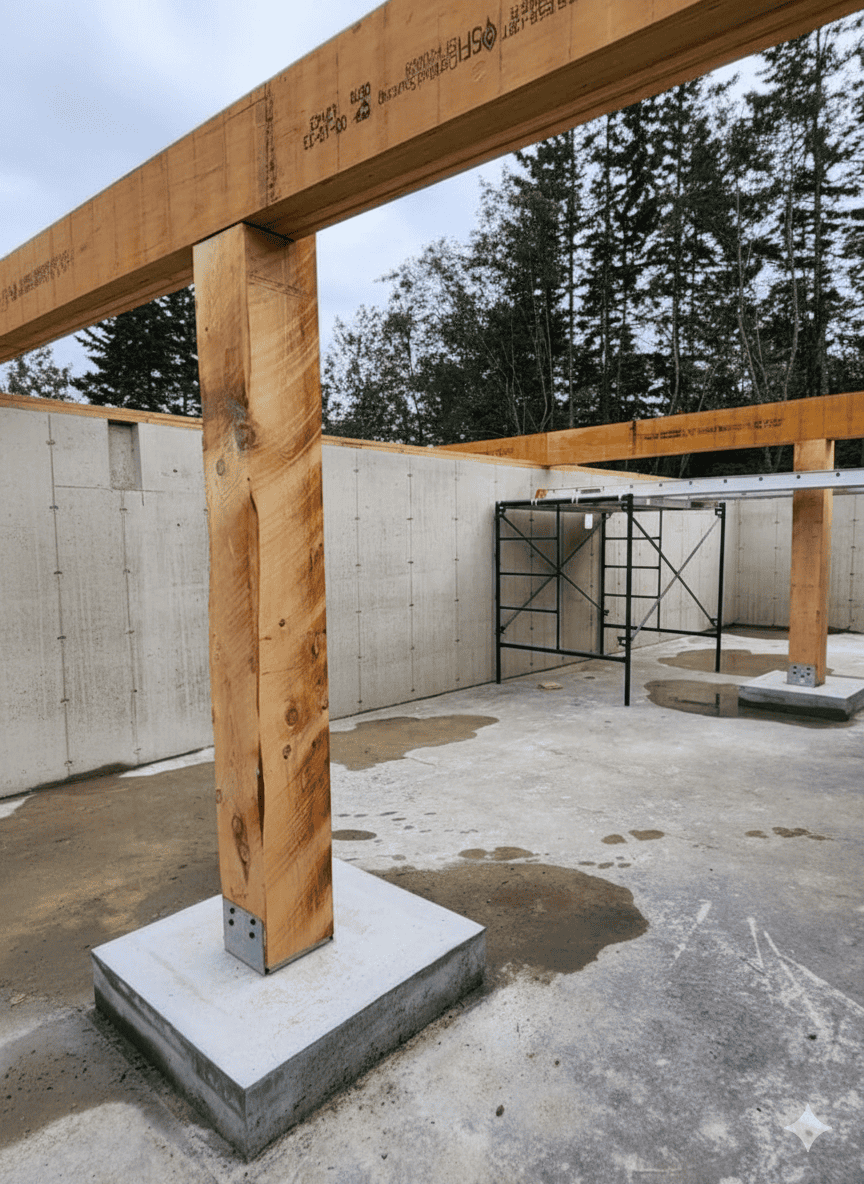New England is defined by its dramatic seasons, each bringing beauty, challenge, and a unique rhythm to daily life. From snowy winters to humid summers and everything in between, these cycles shape not only how people live but also how homes are designed and built. For anyone considering new construction, the region’s climate is an active participant in the process. With guidance from experienced Maine home builders, homeowners can navigate these seasonal realities to create properties that are as resilient as they are beautiful.
Winter: Timing, Preparation, and Challenges
Winter in New England is known for heavy snowfalls, freezing temperatures, and shorter days. While construction does not necessarily come to a halt during these months, it does require careful planning and adjustments. Cold weather can make it more difficult to pour foundations, as concrete must be protected from freezing to cure properly. We often use insulated blankets or heated enclosures to ensure the curing process is not compromised. Snow accumulation can also slow down site preparation and increase the risk of delays.
Despite these obstacles, some aspects of winter work can be advantageous. With trees bare of leaves, site lines become clearer, making it easier to visualize how a home will sit within its environment. Additionally, demand for construction may be slightly lower, allowing for more flexibility in scheduling. However, homeowners must be prepared for weather-related interruptions, as storms or extreme cold can bring progress to a standstill.
Spring: Renewal and Groundbreaking Opportunities
As winter thaws, spring offers a renewed sense of possibility for construction. The longer days and milder temperatures create ideal conditions for breaking ground. Site work, such as excavation and grading, becomes more feasible as the soil softens. We often schedule foundational work during this season to set the stage for the rest of the project.
However, spring also introduces its own set of complications. New England’s spring is notorious for rain, which can lead to muddy conditions, waterlogged soil, and drainage issues. Proper planning is essential to ensure that moisture does not compromise early stages of construction. Installing temporary drainage solutions or adjusting timelines to account for heavy rainfall can help mitigate these risks.
For homeowners, spring is an inspiring time to begin building, as the surrounding landscape comes alive with greenery. Designing outdoor living spaces or orienting windows to capture seasonal views becomes part of the creative process.
Summer: Efficiency and Peak Productivity
Summer represents the peak building season in New England. With warm weather, long daylight hours, and relatively predictable conditions, crews can work efficiently and make significant progress. Framing, roofing, siding, and interior work all move forward more smoothly when temperatures are cooperative and weather interruptions are less frequent.
This season is particularly advantageous for tasks that require consistent warmth, such as exterior painting, sealing, or installing certain materials that are sensitive to temperature. Homeowners who begin their projects in spring often see the bulk of their construction take shape during the summer months.
However, summer is not without its challenges. Heat waves and high humidity can make conditions uncomfortable for crews and potentially impact materials such as wood, which can expand or warp if not properly managed. Planning around these factors, including ensuring adequate ventilation and proper storage, helps maintain quality. In popular regions of New England, summer also brings higher demand for labor and materials, so securing contractors and supplies well in advance is key.
Autumn: A Season of Balance and Beauty
Autumn is often described as the most picturesque season, and it is also one of the most practical times to build. Cooler temperatures make working conditions more comfortable, and the risk of extreme heat or heavy snow is minimal. Our team can accomplish a wide range of tasks during this period, from exterior finishes to landscaping.
The crisp air also provides ideal conditions for installing insulation and sealing homes against drafts before winter sets in. For homeowners, autumn offers the opportunity to enjoy the visual splendor of fall foliage while their property comes to life. It is also a crucial window for preparing the home to withstand the winter ahead. Completing roofing, siding, and weatherproofing tasks in autumn ensures the structure is protected against snow and ice.
The main challenge lies in timing. As days grow shorter, crews have fewer daylight hours to work with, and the looming onset of winter creates a natural deadline. Careful scheduling and efficient project management become critical during this transitional season.
The Importance of Seasonal Planning
Building in New England requires more than just a blueprint and a timeline; it demands an awareness of how each season influences both the process and the finished product. Winter construction may require additional precautions, spring invites the challenge of rain, summer brings peak productivity alongside high demand, and autumn offers balance but with limited daylight. A successful project takes these variables into account from the beginning, ensuring that work is scheduled strategically and that seasonal transitions are anticipated rather than feared.
Beyond the logistics of construction, seasonal planning also enhances the long-term performance of the home. Decisions such as window placement, roof pitch, and insulation materials are influenced by the climate’s extremes. By designing with these factors in mind, homeowners create houses that not only withstand the weather but also embrace the character of New England’s seasons.

Designing for Year-Round Comfort
A final consideration is ensuring that the design itself responds to the rhythm of the seasons. Energy efficiency is central to this goal. Features such as high-performance windows, well-insulated walls, and efficient heating systems are essential for winter comfort, while proper ventilation and shading strategies keep interiors cool in summer. Thoughtful orientation of the home can maximize natural light during darker months while minimizing heat gain during peak summer days.
Outdoor spaces also benefit from seasonal awareness. Covered porches, screened patios, and durable decking materials allow homeowners to enjoy the outdoors through spring rain, summer warmth, and autumn breezes. Landscaping choices can further enhance the seasonal experience, from planting shade trees to protect against summer heat to designing gardens that highlight New England’s spectacular fall colors.
Building with the Seasons in Mind
Each season brings both opportunity and challenge for new home construction, shaping not only how the home is built but how it will be lived in for decades to come. By respecting these cycles and planning accordingly, homeowners create properties that are resilient, efficient, and deeply connected to their environment.
In a region where weather is as much a part of the culture as the architecture itself, seasonal considerations become the foundation of thoughtful construction. Building with the seasons in mind ensures that the finished home is not just a shelter but a reflection of New England’s enduring beauty and character.



